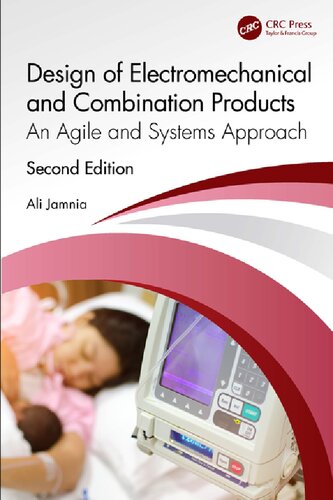

Most ebook files are in PDF format, so you can easily read them using various software such as Foxit Reader or directly on the Google Chrome browser.
Some ebook files are released by publishers in other formats such as .awz, .mobi, .epub, .fb2, etc. You may need to install specific software to read these formats on mobile/PC, such as Calibre.
Please read the tutorial at this link: https://ebookbell.com/faq
We offer FREE conversion to the popular formats you request; however, this may take some time. Therefore, right after payment, please email us, and we will try to provide the service as quickly as possible.
For some exceptional file formats or broken links (if any), please refrain from opening any disputes. Instead, email us first, and we will try to assist within a maximum of 6 hours.
EbookBell Team

0.0
0 reviewsThe second edition of this work, now with the expanded title of Design of Electromechanical and Combination Products, covers the design and development of electromechanical products, updated throughout to focus not only on an Agile Systems approach but also its application to disposables and consumables.
Providing a practical set of guidelines and thorough examination of best practices, this book focuses on cutting-edge research on sustainability of electromechanical and combination products.
Key Features
• Presents the design, development, and life cycle management of electromechanical and combination products
• Provides a practical set of guidelines and best practices for world-class design
• Explains the role of costing and pricing in product design
• Covers Design for X and its role in product life-cycle management
• Examines the dynamics of cross-functional design and product development teams
• Develops DHF and DMR as tools and inherent components of configuration management
• Includes numerous real-world examples of electromechanical and combination product designs
This book is intended for scientists, engineers, designers, and technical managers, and provides a gateway to developing a product’s design history file (DHF) and device master record (DMR). These tools enable the design team to communicate a product’s design, manufacturability, and service procedures with various cross-functional teams.